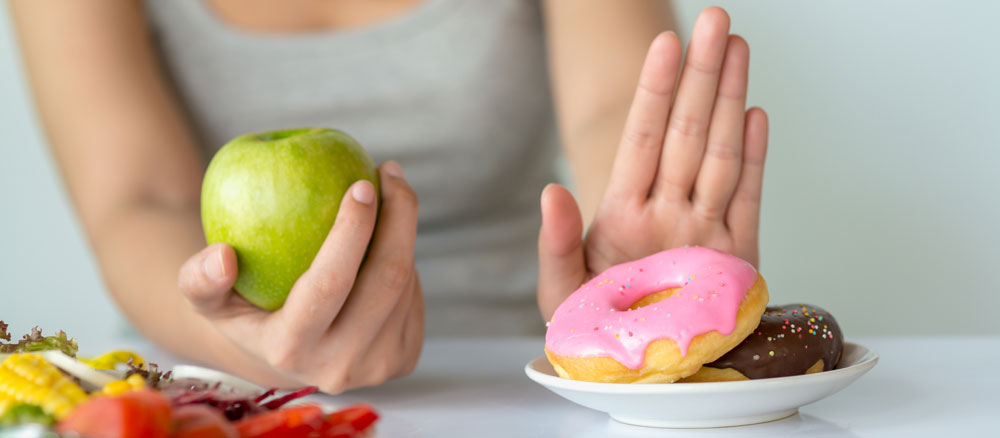Go For a Sweeter 2020 - Eliminate Sugar
January 02, 2020
Happy New Year and congratulations on making it to 2020. If you're reading this, you probably care as much about your health and fitness as we do at Landice. And it seems this time of the year brings this to mind as many of us try to make resolutions that will make us healthier and better people.
So as you go into 2020 and plan your physical fitness routines, let's think about balancing that with our diet routines. Most of us have probably come off some holiday binging and are thinking we're glad that's over with but what are we going to do about eating properly going forward?
As humans, we're probably the only species who don't know how to eat properly on a daily basis. Our prehistoric ancestors roamed the plains and forests eating a variety of plants and meats that were readily available to them. We look back and understand that this was probably quite healthy and even balanced, but are glad we don't have to hunt and gather for our food each day. Today, we can forage at the supermarkets. But this ease of food gathering has been undermined by one primary and dangerous culprit - sugar!
According to a recent New York Times article, sugar lurks in nearly 70 percent of packaged foods and is found in breads, health foods, snacks, yogurts, most breakfast foods and sauces. The average American eats about 17 teaspoons of added sugar a day (not counting the sugars that occur naturally in foods like fruit or dairy products). That’s about double the recommended limit for men (nine teaspoons) and triple the limit for women (six teaspoons). For children, the limit should be about three teaspoons of added sugar and no more than six, depending on age and caloric needs.
Whether you are thin or fat, you can benefit by reducing the sugar in your diet. Cutting added sugar isn’t about dieting and deprivation, and you don’t have to count calories or cut fat. “It’s not about being obese, it has to do with metabolic health,” says Dr. Robert Lustig, professor of pediatric endocrinology at the University of California, San Francisco, and one of the first to raise the alarm about the health risks of added sugar. (His 90-minute lecture called Sugar: The Bitter Truth has been viewed more than nine million times since 2009.)
“Sugar turns on the aging programs in your body,” Dr. Lustig says. “The more sugar you eat, the faster you age.”
Sugar Belly
Many scientists now believe that added sugar is a main culprit in the obesity epidemic, but normal-weight people can suffer the same health problems associated with too much sugar. A 15-year study found that eating high amounts of added sugar doubles the risk of heart disease, even for people who aren’t overweight. Added sugar has also been implicated in an increased risk for Type 2 diabetes, cancer, stroke and even Alzheimer’s disease.
We’ve all seen the beer belly associated with drinking too much alcohol. Consuming too much added sugar can lead to a similar condition called “sugar belly,” in which your waist is bigger than your hips. Sugar belly can arise when the liver repeatedly detects more fructose, a form of sugar found in fruits that is also added to many processed foods, than our bodies can use. To deal with it, the liver breaks down the extra fructose and changes it to fat globules, which are then exported into the bloodstream and deposited around your internal organs and your midsection.
Fruit vs. Fructose
When you eat a strawberry or other fruit, you are eating fructose in its natural state, and it comes with a number of micronutrients plus fiber, which slows absorption and the rate at which sugar enters your bloodstream. So yes, it’s O.K. to eat fruit! Your body can handle fructose when it’s eaten as whole fruit.
But the fructose found in ultraprocessed foods and beverages is concentrated from corn, beets and sugar cane, and much or all of the fiber and nutrients have been removed. Without the fiber to slow it down, your body gets a big dose of fructose that can wreak havoc.
Cutting Sugar
This can be challenging when a majority of foods available in supermarkets contain added sugar, abstinence or mostly-abstinence is the way to go.
The New York Times has created a 7-day Sugar Challenge, which will deliver a new strategy each day for cutting added sugar. By the end of the week, you will have adopted several new healthful habits that can put you well on the way to cutting added sugar from your diet for good.
We know it's not easy and you will probably have cravings. But, if you stick with it these cravings will subside. You will re-program your brain to follow a new and healthier path and isn't that what many of us resolve to do in the new year?
.png?width=258&height=54&name=Landice_logo%20(1).png)




